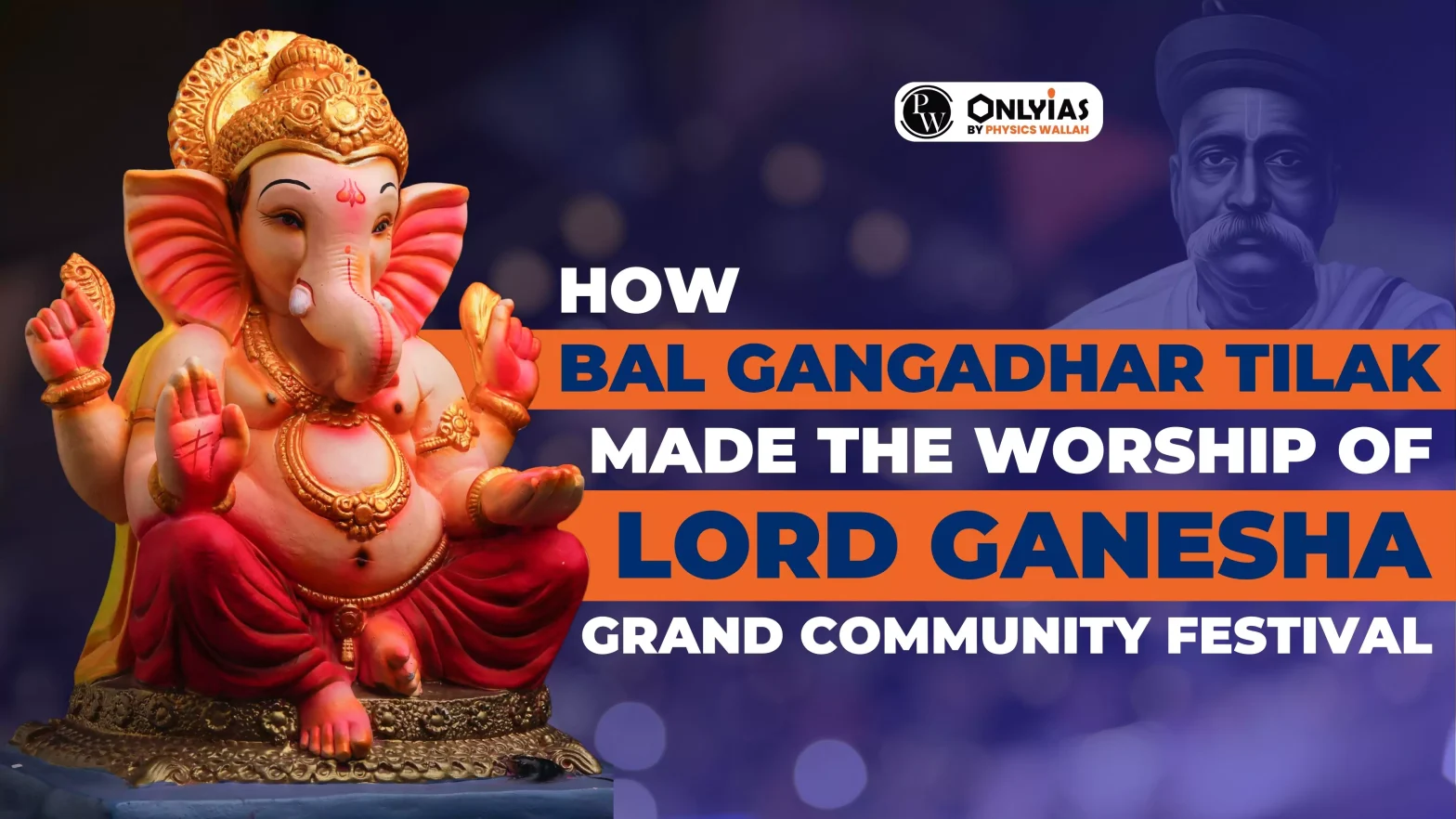Before 1893, Ganesh Chaturthi was a one-day, private celebration primarily observed by Brahmins and upper castes. It was a modest festival with limited public participation. However, in 1893, Bal Gangadhar Tilak transformed this tradition. His efforts turned Ganesh Chaturthi into a grand, ten-day public festival celebrated with great pomp and show.
Relationship between Bal Gangadhar Tilak and Ganesh Chaturthi as a Community Festival
- Tilak’s Ideological Background: Tilak, referred to as Lokmanya or the Leader of the People, belonged to the extremist tradition, as opposed to the moderates. The methods of extremists were somewhat more aggressive compared to those of the moderates.
- Post-1857 Rebellion Context: Following the experience of 1857, when an attempt by Indian soldiers to overthrow the British, known as the First War of Independence, failed and the rebellion was ruthlessly crushed.
- The moderates of that time sought more power and concessions from the British rather than aiming to completely overthrow colonial rule.
- In contrast, extremists like Aurobindo Ghosh advocated for self-rule, or Swaraj.
- Tilak famously declared, “Swaraj is my birthright, and I shall have it.”
- He started two newspapers, Kesari (in Marathi) and Mahratta (in English), and was known for his powerful oratory and giving powerful speeches.
- He was one of the most popular leaders before Gandhi.
- Transformation of Ganesh Chaturthi: During that time, the English often portrayed Indians as “uncivilised,” “illiterate,”, claiming it was their divine mission to “civilise” them.
- Many Indians believed this narrative.
- However, a few great leaders, including Tilak, criticised this portrayal and asserted that Indian civilization was already great and flourishing.
- Tilak aimed to counter this by popularising historical figures like Shivaji, encouraging people to recognize their contributions, feel pride, and be inspired.
- Tilak saw an opportunity to use the Ganesh festival to galvanise Hindu society.
- He initiated the tradition of celebrating Ganesh Chaturthi as a public event, urging the youth to celebrate it as a proud tradition of Indian civilization.
- He wanted to demonstrate to the British that Indian culture and traditions were superior.
- The festival began to be celebrated with great pomp, where people could gather, sing patriotic songs, and discuss nationalist ideas.
- This shift not only brought the festival into the public sphere but also turned it into a tool for political mobilisation.
- In the same year, to further the cause of nationalist resistance, Tilak started the Shivaji festival in 1896 with the aim of inspiring nationalist ideas among young Maharashtrians.
- That year, he also organised a campaign in Maharashtra to boycott foreign cloth in protest of the imposition of an excise duty on cotton.
Enroll now for UPSC Online Course
Note: Religious Motivations in Historical and Contemporary Contexts
- Throughout history, religion has often been used for various purposes such as power accumulation, political manoeuvring, and motivating soldiers.
- Even recently, the Taliban took over Afghanistan based on religious grounds, claiming their intention was to implement Sharia law.
- Similarly, in mediaeval history, many Islamic rulers motivated their soldiers by framing their battles as Jihad, a holy struggle.
- In India, Aurobindo Ghosh used a similar strategy to inspire youth.
- He portrayed the nation as a goddess, “Bharat Mata,” who was in chains.
- He urged the youth to view their dedication to religion as a parallel to their dedication to their country.
- He encouraged them not to tolerate the oppression of their “goddess” and to continue their struggle until they freed her from bondage.
|
Criticism and Controversy
- Communal Shade in the Freedom Struggle: However, Tilak has been criticised for giving the freedom struggle a communal shade and for increasing communalism. Congress leaders were also criticised for their leanings toward Hinduism and supporting Hindu causes.
- For example, the year 1893 saw a wave of communal clashes between Hindus and Muslims across the country.
- On August 11, the city of Bombay witnessed violence on a scale it had not seen before.
- Tilak’s Response to British Policies: Tilak, who was based in Poona (now Pune), responded by attacking the British for fomenting communal tensions and accused them of being partisan towards Muslims.
- He stated that the growing muslim aggression had to be beaten back by the Hindus when government protection failed and that violence was resorted to only under provocation.
- He also mentioned that the growing unity among Hindus was perceived as a threat by the British, who countered it by aligning with Muslims.
Thus, his emphasis was on Hindu unity and symbolism.
Check Out UPSC CSE Books From PW Store
Conclusion
The Ganesh festival today, with its grand celebrations and mass participation, is a testament to Tilak’s vision. While it has evolved into a significant cultural and commercial event, its roots lie in Tilak’s strategy to unite and mobilise Hindus against colonial rule.
![]() 7 Sep 2024
7 Sep 2024

